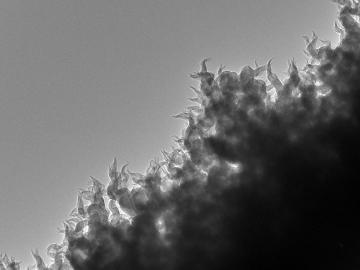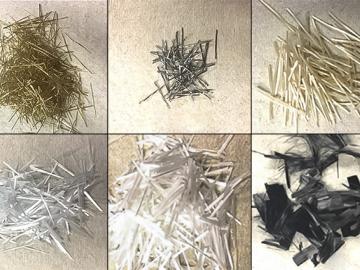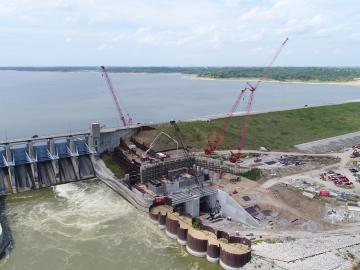
Filter News
Area of Research
- Advanced Manufacturing (8)
- Biology and Environment (36)
- Building Technologies (2)
- Computational Engineering (1)
- Computer Science (5)
- Energy Science (59)
- Energy Sciences (1)
- Fusion and Fission (6)
- Fusion Energy (2)
- Isotopes (3)
- Materials (54)
- Materials for Computing (9)
- National Security (13)
- Neutron Science (12)
- Nuclear Science and Technology (1)
- Quantum information Science (2)
- Supercomputing (43)
News Type
News Topics
- (-) Big Data (62)
- (-) Composites (21)
- (-) Frontier (45)
- (-) Materials (87)
- (-) Physics (38)
- (-) Security (17)
- 3-D Printing/Advanced Manufacturing (89)
- Advanced Reactors (25)
- Artificial Intelligence (92)
- Bioenergy (84)
- Biology (100)
- Biomedical (53)
- Biotechnology (28)
- Buildings (50)
- Chemical Sciences (48)
- Clean Water (30)
- Computer Science (153)
- Coronavirus (30)
- Critical Materials (17)
- Cybersecurity (17)
- Education (2)
- Emergency (4)
- Energy Storage (64)
- Environment (164)
- Exascale Computing (52)
- Fossil Energy (7)
- Fusion (47)
- Grid (54)
- High-Performance Computing (93)
- Hydropower (12)
- Irradiation (2)
- Isotopes (38)
- ITER (7)
- Machine Learning (51)
- Materials Science (89)
- Mathematics (11)
- Mercury (10)
- Microelectronics (3)
- Microscopy (34)
- Molten Salt (7)
- Nanotechnology (29)
- National Security (63)
- Neutron Science (109)
- Nuclear Energy (85)
- Partnerships (37)
- Polymers (18)
- Quantum Computing (39)
- Quantum Science (58)
- Simulation (51)
- Software (1)
- Space Exploration (23)
- Statistics (3)
- Summit (48)
- Transportation (66)
Media Contacts

In a new twist to an existing award-winning ORNL technology, researchers have developed an electrocatalyst that enables water and carbon dioxide to be split and the atoms recombined to form higher weight hydrocarbons for gasoline, diesel and jet fuel.

A team of researchers at Oak Ridge National Laboratory and the University of Tennessee have developed a concrete mix that demonstrated high early strength within six hours of mixing, potentially doubling the production capacity for the precast industry.

Nuclear physicist Caroline Nesaraja of the Department of Energy’s Oak Ridge National Laboratory evaluates nuclear data vital to applied and basic sciences.

Oak Ridge National Laboratory researchers combined additive manufacturing with conventional compression molding to produce high-performance thermoplastic composites reinforced with short carbon fibers.

A team of Oak Ridge National Laboratory researchers demonstrated that an additively manufactured hot stamping die – a tool used to create car body components – cooled faster than those produced by conventional manufacturing methods.

Twenty-seven ORNL researchers Zoomed into 11 middle schools across Tennessee during the annual Engineers Week in February. East Tennessee schools throughout Oak Ridge and Roane, Sevier, Blount and Loudon counties participated, with three West Tennessee schools joining in.

Cory Stuart of ORNL applies his expertise as a systems engineer to ensure the secure and timely transfer of millions of measurements of Earth’s atmosphere, fueling science around the world.

On Feb. 18, the world will be watching as NASA’s Perseverance rover makes its final descent into Jezero Crater on the surface of Mars. Mars 2020 is the first NASA mission that uses plutonium-238 produced at the Department of Energy’s Oak Ridge National Laboratory.

Collaborators at Oak Ridge National Laboratory and the University of Tennessee Health Science Center are developing a breath-sampling whistle that could make COVID-19 screening easy to do at home.

A new Department of Energy report produced by Oak Ridge National Laboratory details national and international trends in hydropower, including the role waterpower plays in enhancing the flexibility and resilience of the power grid.


